Orchids
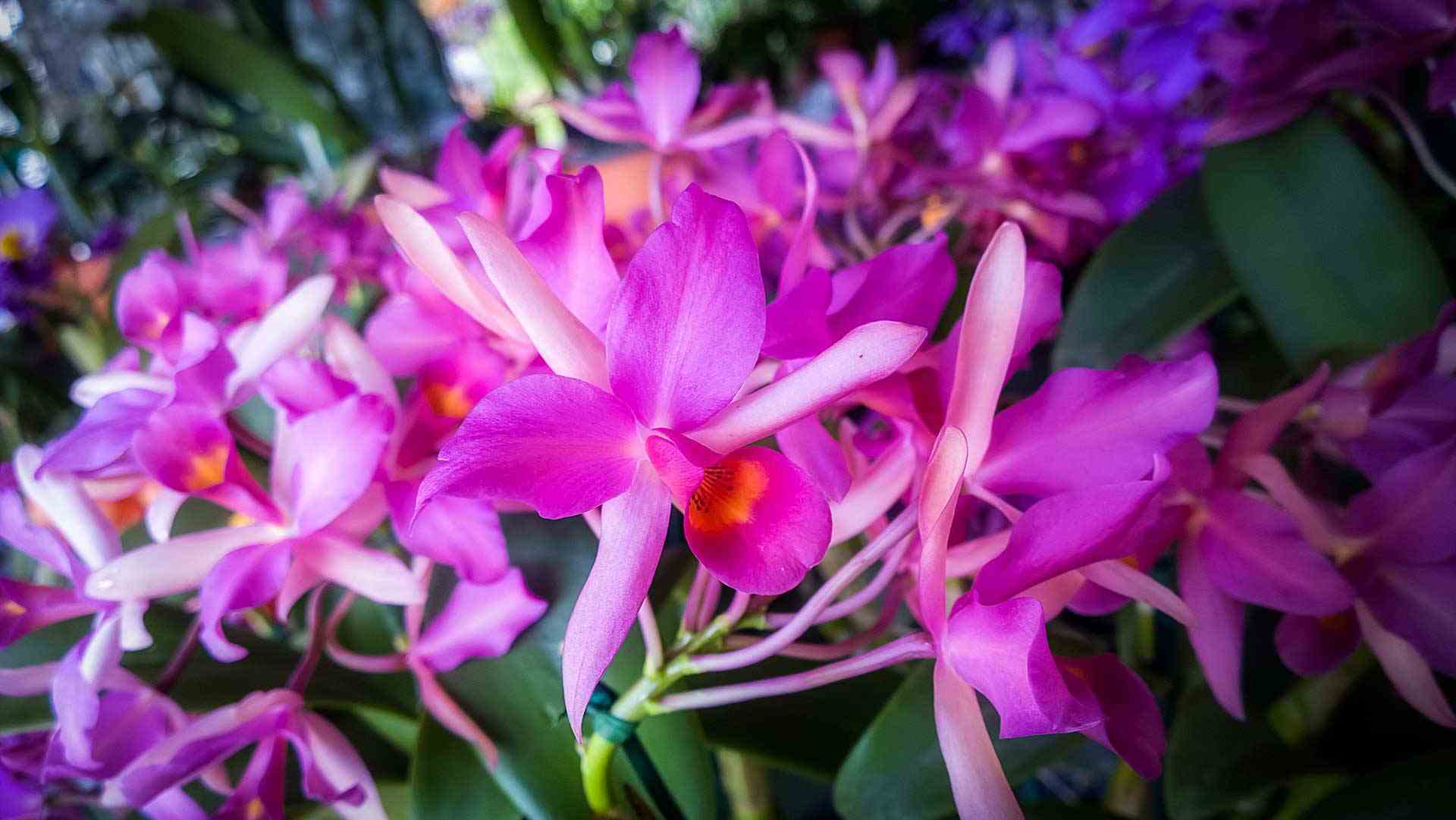
What Are Orchids?
Orchids are a family of flowering plants (Orchidaceae) known for their wide variety of blossom forms and colors. This diverse family of plants was (and still is) prized for their exquisite flowers and rarity, reaching an apex in the 1800s when the obsession with orchids among the upper classes was known as “Orchidelerium.”
What Is Special About the Orchid Family?
Orchids have been idolized by humans since the beginning of written language. People across time have been obsessed with them; in ancient China, pictures of them have survived from before the common era.
Orchids are iconic beauties, and most people appreciate the vast array of bloom shapes and colors found on all continents except Antarctica. Not to mention they’re like living jewels, often rare even in the wild, and this made them more noticeable than other plants.
Rarity drives human interest, and orchids are no exception. Exclusivity and rarity have driven the value up in the past, as many of them are hard to find and even endangered.
Orchidelerium did not spare Florida, and the arrival of rail under the direction of Henry Flagler to the southernmost reaches of the state coincided with the poaching of many of Florida’s rarest wild orchid flowers.
Tropical plants and fruits, in particular, were a sign of wealth – as a fresh pineapple centerpiece on the table demonstrated a socialite’s wealth, status, and access to exclusive and pricey goods, so did an orchid bloom.
Orchids were being harvested in Florida to serve this demand. Some of the plants that poachers harvested were between 20 and 50 years old only to bloom and die as symbols of aristocracy. The plight of orchids in Florida was dire until the 1970s and 1980s when poaching was finally cracked down on, but even today many wild orchids are still being poached.
Today, Fairchild Tropical Botanic Garden’s Million Orchid Project aims to undo some of the damage that poaching and urbanization have done to Florida’s native orchid populations and the wildlife that depends on them.
Shop Orchids in the Fairchild Plant Store
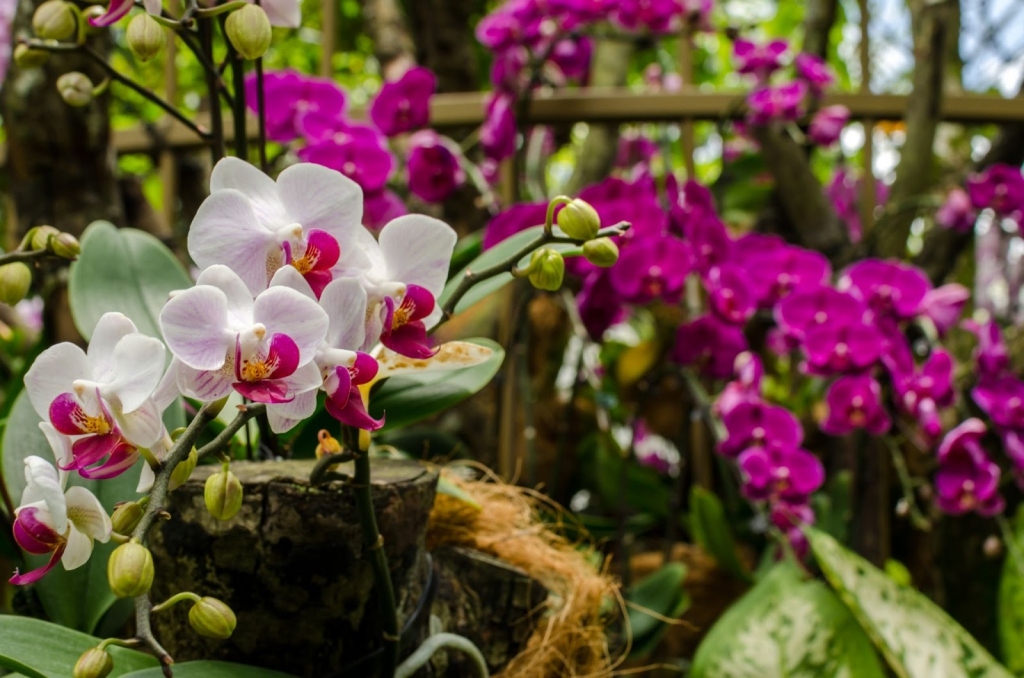
The project’s goal is to propagate 1,000,000 native orchids for reintroduction into the public spaces and urban landscape of South Florida – so far, more than 300,000 have been reintroduced into the environment in schools, public parks, public spaces, hospitals, streetside gardens, and more.
Fairchild’s orchid experts specialize in the cultivation and care of not only orchids native to the state of Florida but also those from abroad.
Orchids at Fairchild
At Fairchild, our experts focus their attention on orchids from all over the tropics with particular emphasis on orchids of cultural and breeding importance and orchid species from Florida and the Caribbean. This renewed focus on the orchid collections at Fairchild Garden was largely due to the partnership with American Orchid Society (AOS) and the public enthusiasm for the Million Orchid Project.
The Million Orchid Project
The Million Orchid Project is the largest community-driven outreach program of its kind.

The Million Orchid Project involves not only growing native orchids from seed at the Fairchild Science Village Orchid Lab but also working with the local schools and community to grow Florida native orchids in their gardens and public spaces. The project emphasizes about 10 species out of roughly 100 native to Florida; these were selected because they are hardy plants that can handle drier and hotter conditions within the urban environment.
One such species is Florida’s native butterfly orchid, Encyclia tampensis, which is perfectly suited for growing in the city was also the most common before urbanization. However, outside of the Million Orchid Project, Fairchild houses thousands of seeds, species, and hybrids from our breeding programs and seed library.
This research has been driven by our students and scientists who work tirelessly to propagate orchids, catalog the orchid seeds, understand the genetics, and plan where they’re ultimately going to end up in the garden or in the community.
Viewing Orchid Flowers at Fairchild
Fairchild Tropical Botanic Garden is unique in that we’re the only botanic garden permanently attaching the majority of our orchid collection outdoors on trees in a “natural context.” In other gardens, like the beautiful Singapore Orchid Garden, they are refreshed as potted plants or taken out of greenhouses temporarily to be displayed to guests. For gardens in the temperate north, the conditions are too cold to grow most orchids outside of the greenhouse. Since 2018, Fairchild’s historic orchid collection, donated by the American Orchid Society (AOS), has been on public display for the first time.
Nearly 50,000 orchids throughout Fairchild are tree-attached, with roots that anchor them to the bark of a tree. Varieties whose roots attach to tree bark are called epiphytes, or epiphytic orchids. These are mostly restricted to the tropics and subtropics. Outside of the tropics, orchids grow exclusively on the ground with roots in the soil (these are referred to as terrestrial orchids, although they also can be found on the ground in tropical environments).
At Fairchild, you can discover our orchids in three core exhibits in the “uplands.” Each exhibit is in a different plot, and they each have a theme.
Shop Fairchild-Grown Orchids
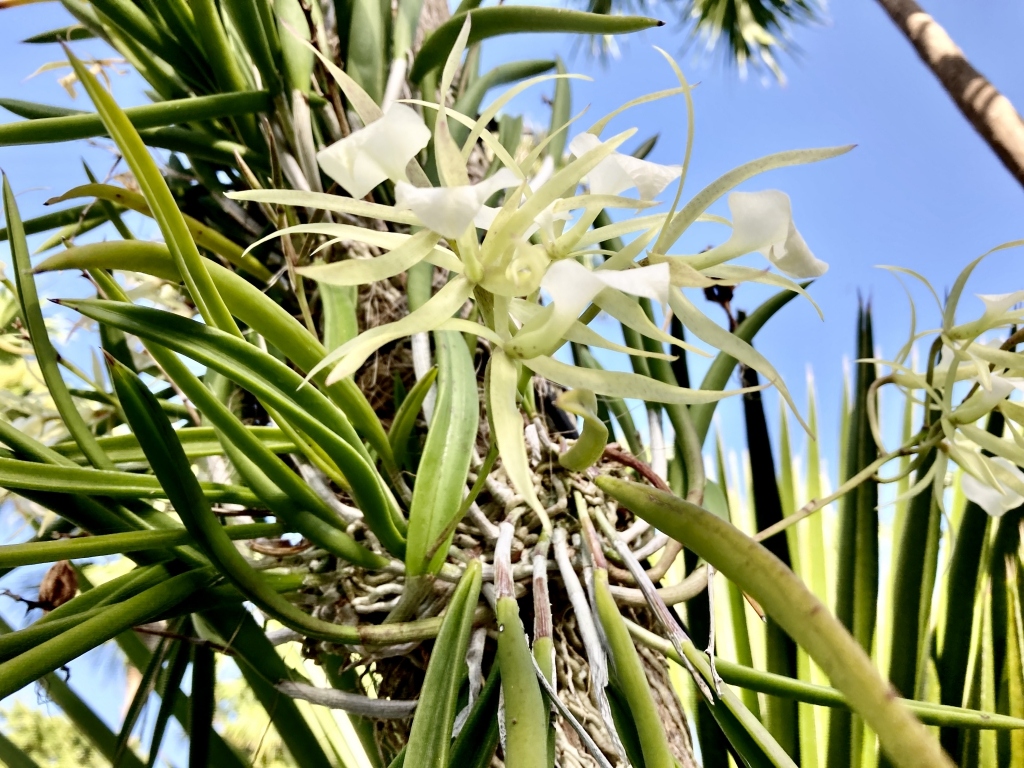
Tropical Orchid Rainforest
Inspired by the National Orchid Garden at Singapore Botanic Garden, we will install tens of thousands of orchids in dense arrangements on every tree and branch throughout our existing rain forest plot, creating a world-class visitor experience and a trial garden for experimentation with new hybrid varieties and student research. This exhibit will be the permanent home for the AOS Heritage Collection which is currently being housed at the Fairchild nurseries and is not presently accessible to the general public. Since March of 2019, we have installed tropical varieties including the genera Phalaenopsis, Dendrobium, Vanda, Epidendrum, and Oncidium.
Caribbean Jewels
This exhibit will consist of a comprehensive collection of Caribbean species (>100 species) to be installed in Fairchild’s Palmetum plot. There is a particular local interest in Bahamian and Cuban species with an emphasis on the genera Encyclia, Broughtonia, and Laelia. These species will represent a diverse collection for research and ex-situ conservation and will be of particular interest to local communities.
South Florida Native Orchid Hammock
This collection will be designed to represent the historical landscape of Miami and will house the most comprehensive outdoor collection of Florida native orchids (40-50 species) in the US. Most are considered threatened or endangered in the state (Florida Department of Agriculture and Florida Natural Areas Inventory). The exhibit will be located in Fairchild’s existing native oak hammock plot. Planting designs will be implemented to represent the natural growth habitat and create a unique teaching tool to showcase how orchids thrived before the human impacts that began in the late 1800s.
As a result of our leadership and expertise in orchid propagation, education, and conservation we are also uniquely positioned to provide resources to other botanic gardens to diversify and sustain their orchid collections.
Orchid Species We Sell
We sell orchids at Fairchild’s plant shows and online. At our plant sales, visitors are welcome to talk to our scientists and learn about conservation and orchids that do well in South Florida.
Our focus in orchid sales is on varieties you can grow outdoors in south Florida, particularly those that perform well outdoors, on trees, and in hot weather. This frequently includes orchids from the Caribbean, native orchids, and a few other hot-growing tropical orchids like Vandas. The plants on offer vary based on what Fairchild has in stock and what our scientists and gardeners want to focus on. Some native orchids we feature for sale include:
Encyclia tampensis
The Florida Butterfly Orchid (or Tampa Butterfly Orchid) is found in not only its namesake state of Florida but also the Bahamas and Cuba. In Florida, you’re most likely to find it in the south and central parts of the state. It features greenish or bronze-colored petals around a white lip with a purple dot. This plant is an epiphyte, attaching to live oaks, mangroves, cypress, and more in its natural habitat.
Trichocentrum undulatum
The Spotted Mule Eared Orchid is found in tropical regions all around the Gulf of Mexico and Caribbean, known to Florida, the West Indies, and Central and South America. Its flowers are a mottled brown-green color with a bright purple-pink center. It is rare in the wild in Florida, found only deep in the Everglades.
Cyrtopodium punctatum
Also known as the Cowhorn Orchid, Bee Swarm Orchid, and Cigar Orchid, Cyrtopodium punctatum‘s orchid flower has pale yellowish-green sepals with purple spots, brighter but similarly colored petals, and a lip with ruddy brown-orange marks. Populations of this epiphytic orchid can be found in Mexico, Argentina, and Florida.
Epidendrum nocturnum
Known as the Night Fragrant Epidendrum, this variety features long, slender, dramatic flowers with yellowish sepals and a three-lobed white lip. While this species is doing well in the West Indies, Mexico, Central America, and northern South America, it is endangered in its native range in Florida.
Broughtonia
This genus from the orchid family is native to the Bahamas, Cuba, Jamaica, Haiti, the Dominican Republic, and Puerto Rico, but not Florida. However, Fairchild likes to grow and sell orchids with a cultural heritage that represents Miami’s diverse population, and so this genus, with its gorgeous pink-to-purple blooms, is a common one in Fairchild’s orchid sales.
Browse Orchids for Sale: Grown by Fairchild!
Growing and Caring for Orchids at Home
What is the best way to care for orchids? Well, that depends on the orchid. It also depends on where you’re attempting to grow it. “Know your orchid!”
For example, many guests at Fairchild tell us about a beautiful, exotic orchid they’ve purchased in the past, only to discover that their type is not suited to the climate of Florida or indoors, and it dies. The scientists and growers at Fairchild suggest species and hybrids that can perform outdoors in Florida’s climate with little to no maintenance.
Generally, native and Caribbean orchids will perform much better in southern Florida than cooler growing tropical varieties, and there will be little to no maintenance; these are great for landscapes and seasonally dry plots. Once their roots are established, they’ll usually require absolutely no watering, fertilizing, trimming, or moving, and you’ll have a beautiful outdoor flower that essentially takes care of itself.
However, if you’re elsewhere, there are some simple ground rules you can follow for orchid care.
Know Your Orchid Plants
Start with the species and region the orchid is from. Generally, if you find these, you can find a guide for care online. If the plant wasn’t staked with information about its species or care instructions or if you don’t know where your plant is from, there’re a lot of great resources to find out. The American Orchid Society, which is headquartered at Fairchild Tropical Botanic Garden, can provide plenty of guidance on orchid culture, including identifying your orchid plant and more information for growers on how to care for it.
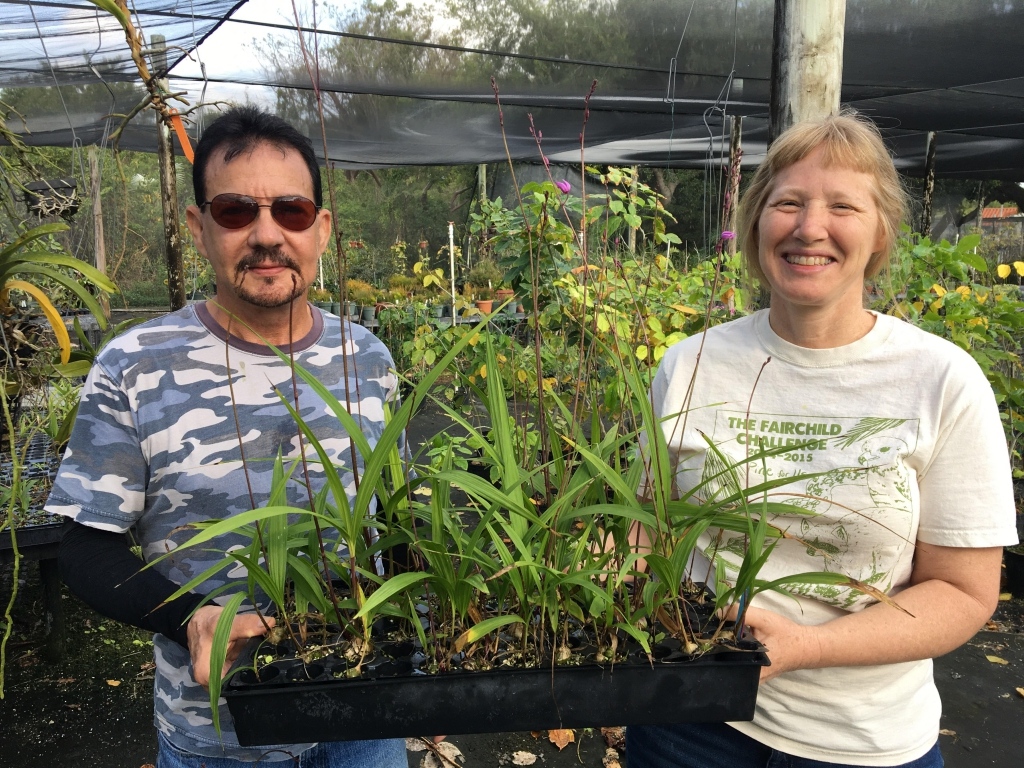
Light
Light levels are important when it comes to caring for your orchid, but this is another case where knowing the orchid species and where it’s from will help you determine where the orchid should be planted or positioned relative to the light.
For example, the Phalaenopsis or moth orchid – one of the most common orchids sold in supermarket floral sections – are low-light orchids, and they can grow and thrive in full shade.
However, sometimes people make a mistake and place the shade-loving Phalaenopsis on a hot palm or leave them in the sun in front of a south-facing window, and they get burnt by the light and heat, leaving them with shriveled leaves or yellow and black blotches on the leaves. Leaves rapidly changing color or the appearance of large spots can actually be an early warning sign that the plant is receiving too much light. Another popular variety that can be light sensitive is the Dendrobium Phalaenopsis, commonly called the “DenPhal” orchid. The most important rule to achieving success with your orchid is to “know your orchid.” A little research goes a long way.
Most orchids produce flowers on a long flower stem (also called a flower spike or inflorescence); these are different than the stems on the body of your plant that grow the leaves.
When and for how long your orchid will bloom depends on the type you have. Following the blooming period, the flowers will slowly wilt and die, as well will the flower stem. This process normally will be indicated by the gradual browning of the flowers and stem. At this time, you can prune off the dry brown stems near the base of the leaves, making sure not to cut off any green parts of the plant. However, it is not necessary to remove the dead flower stems but it will improve the overall aesthetics of your plant until the bloom.
On the other hand, hot growing varieties such as Vanda, Grammtophyllum, and Myrmecophila (formerly Schomburkia) require full sun to flourish and bloom and can be grown on palms. They are hardy and like hot weather and bright light.
There’s no one simple answer to how much light your plant needs – it depends on the orchid type, as different species have different requirements.
Water
Orchids with an exposed root system evolved to grow on a tree get water during raining, but otherwise need their roots to stay dry to avoid disease. Therefore, if your orchids are planted in pots or other growing media, it needs to dry down between watering.
Some orchids are water-loving orchids; these orchids grow in high humidity tropical forests or cloud forests. These ones will prefer frequent watering. Sometimes, you can identify a problem if the plant has unusually leathery leaves, which can be a sign of too little water.
However, lowland elevation orchids prefer hot and dry conditions, and infrequent watering and low humidity best suit them. It’s important to avoid overwatering these orchids – check to see how long they need to dry down before the next watering.
Don’t blindly rely on the ice cube method for watering! Each plant has different needs – check to make sure before using a one-size-fits-all watering technique. Overwatering can cause the growth of damaging fungi, while underwatering will dry your plant out.
Fertilization/Feeding
One of the reasons we recommend growing your native orchids to our visitors is that they don’t require additional feeding and can obtain the nutrients they need from their environment.
Many more orchids, like fast-growing tropical species and hybrid varieties, are designed to grow larger and often have larger and more flower blooms, so they need more energy and require regular feeding. Typically, plants that require more light often need more food (fertilizer), and some specialized orchids may even need growth hormones to encourage new growth or to help the orchid flower or re-bloom.
For varieties that require fertilization, our general rule-of-thumb is to use half-strength fertilizer on a weekly frequency – also the “weakly weekly” rule.
However, with the diversity of varieties out there to choose from in the orchid family, each orchid variety will have a “sweet spot” for when and how to fertilize, and we recommend you research your specific plant to be sure. If fertilization doesn’t result in more growth, it might be time for repotting in a fresh substrate and a larger pot to give your flower room to grow.
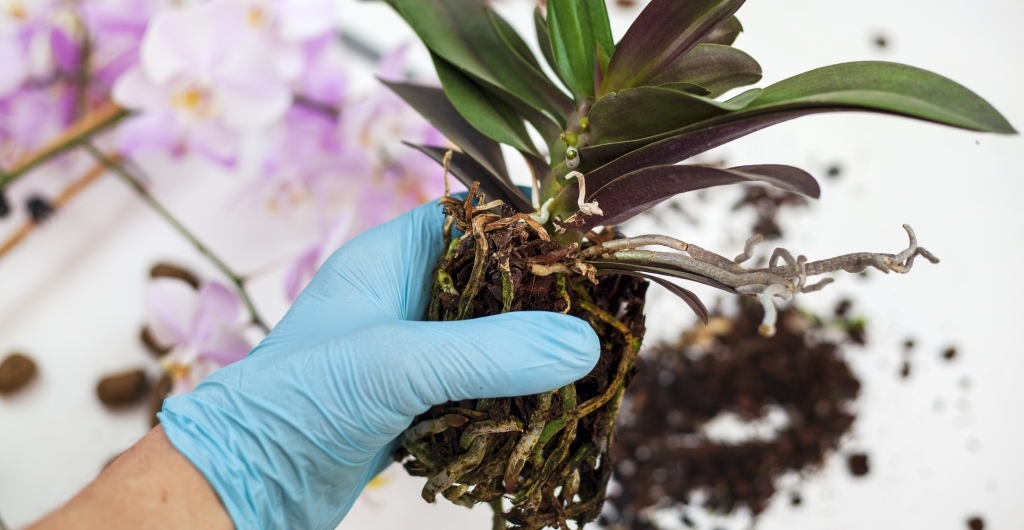
What Is the Best Orchid for Beginners to Take Care Of?
For beginner orchid growers, the answer will depend on whether the orchid will be grown in a pot or outdoors.
The ideal orchid to grow outdoors will depend on your climate. In South Florida, most orchids that will do well outdoors will be native to the Caribbean or from the lowland tropics. That’s why we use native orchids for our Million Orchid Project. Another important consideration for outdoor planting: can the orchids handle frost? If it drops below 55 degrees in your growth zone, do you have a way to take them inside or cover them?
Outdoors, you can plant most orchids in a pot, on a plaque, or on a tree; or you can mimic a tree surface with a mounting substrate or corkboard surface to attach the roots onto. When grown outdoors in a pot, they should be protected from direct sun and allowed to dry down between rain and/or watering.
How to Grow Your Orchids on Trees
Where to Plant?
Most epiphytic orchids will prefer tropical hardwoods and shady palms. Select horizontal limbs that have some shade from the afternoon sun. You can also plant directly on the trunks, preferably on the north or east face to avoid the direct afternoon sun.
How to Plant?
Remove all potting media from roots, tightly secure plants bare root individually or in clusters using sisal string, twine, and/or plastic zip ties directly against bark surface. Do not use metal wire to attach your orchid as this can girdle and/or harm the tree.
However, when it comes to most cultivated orchids as houseplants, conditions will generally be the same in all houses, except maybe sunlight levels (which could depend on how far north or south you are, the amount of natural light in your room, and how many overcast days per year you have).
In general, opt for cooler climate orchids native to temperate regions, as most tropical orchids don’t like the cold and dry conditions of a house. A great choice for the indoors is the Jewel Orchids (Ludisia discolor) or Lady Slipper Orchids (Cypripedioideae).
Indoor orchids are commonly planted on sphagnum moss, fir bark, or peat moss. Some may even prefer soil, although soil may often keep the plant too moist in the pot and cause problems. Frequently grown indoor sympodial orchids for beginners include the moth orchid, a Phalaenopsis hybrid, or Cymbidium varieties, which have a few cooler-climate varieties you can get away with growing indoors. Cattleya, a genus of South and Central American orchid, also grows well on fir bark and other potting substrates; Cattleyas can be great choices for an indoor plant, and with its bright pink flowers, a Cattleya is always a crowd-pleaser.
Additionally, growing it indoors can mean a variety of different things. Is your indoor growing environment a low-light shade house or a bright greenhouse, or are you just growing in your house? Will the room have good air circulation? These conditions might change the ideal orchid species to choose for growing.
